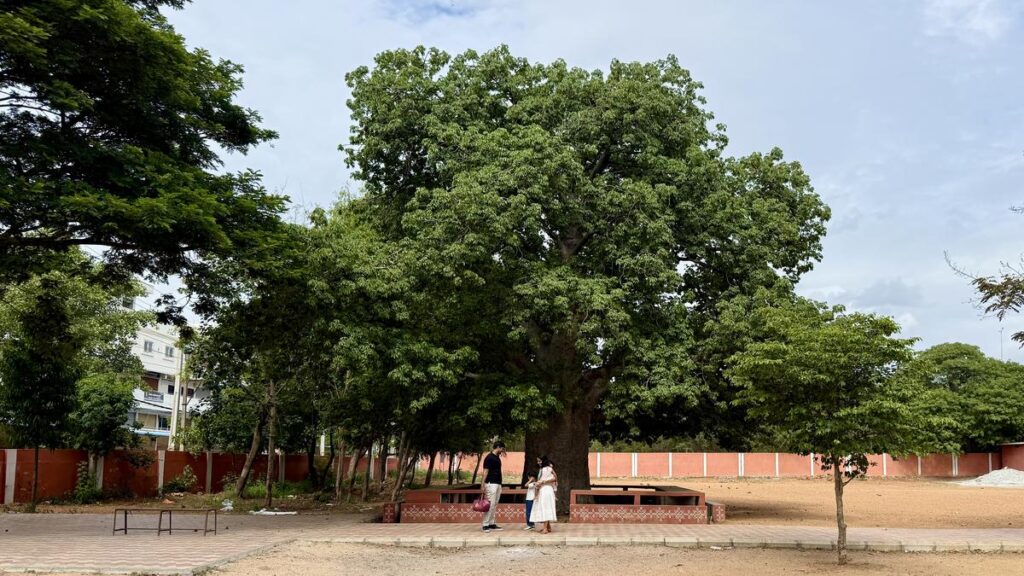
One of the African Boabab trees inside the school complex in Aramghar in Hyderabad.
| Photo Credit: Serish Nanisetti
The African Boabab tree is under increasing abiotic stress across the world. A paper in ‘Frontiers in Forests and Global Change’ noted how: “The heightened disturbance predicted from increased climate variability, hot droughts and landfalling tropical cyclones magnifies mortality risk for, ‘Africa’s favourite tree,’” This is true for some of the baobab trees even in Hyderabad. One of them found just off the PVNR Expressway has collapsed exposing the inner hollow trunk. While the tree has survived, the surrounding area is being encroached with building debris being dumped to block the pathway for worshippers from reaching the tree that is near the ancient Ananta Padmanabhaswamy temple.
“Loss of habitat is one form of climatic stress that is affecting the baobab trees in Africa. But in India, this is not a factor. The trees are mostly found in western ghats, peninsular India and central India where the rainfall is for a short duration,” says Sangram Chavhan, Senior Scientist at the National Institute of Abiotic Stress Management.
However, a nature group from the city now says that they have a count of 37 boababs in and around Hyderabad. The number includes a group of seven trees in the Aramghar area with two of them inside the Jamia Islamia Darul Uloom and three inside the Zilla Parishad High School in Aramghar with one of them with a girth of approximately 45 feet.
“Baobabs have so much going for them that it’s a pleasure to discover that Hyderabad is home to so many. The amazing bottle-shapes, massive size, myriad uses and stories about Baobabs made them exotic curiosities of the plant world. When I came to Hyderabad almost 40 years ago I heard about the legendary Hathiyan ka jhaad of Hyderabad which has stood for more than 4 centuries, whose huge girth and hollowed centre lends credibility to some entertaining historical facts,” says Kobita Das, a nature watcher and activist, referring to the change from one tree inside the Naya Qila area of the Golconda Fort to now.
A number of mapping efforts have been made earlier in Hyderabad for the exotic and sometimes storied trees that landed in India due to pre-modern global trade. “Equally fascinating is the genealogy of the trees and how they came to certain areas in India along with Arab traders at first, and later with slaves brought by colonisers like the Dutch, the Portugese and the British,” says Ms. Kobita Das.
An earlier study had noted how the African Boabab inside the Naya Qila is the biggest outside Africa with the oldest part of the tree estimated at 484 ± 50 yrs using radio carbon dating. The tree’s girth was measured at 25.48 metres or about 83.5 feet.
Published – July 28, 2025 08:59 pm IST


